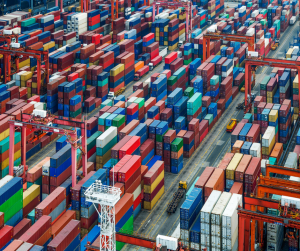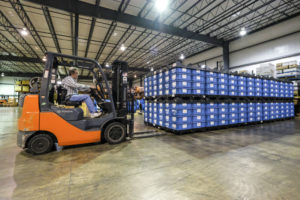Without a doubt, the global pandemic is changing how people live and work, the freight forwarding industry included. The shipping business has gone from under the radar, business as usual to headline news over the last year. From ship to shelf, supply chain issues will continue into 2022 and the challenges will forever change how the industry works. Here are the trends we will be watching in the New Year and what supply chain teams can do now.
Planning
Supply chain planning is going to be critical in 2022. Next year, 15,000 west coast dockworkers will renegotiate an International Longshore and Warehouse Union contract. Between continued record-breaking shipments, ongoing port congestion and COVID issues resulting in worker shortages, this has potential to become a rocky negotiation. Plan now to pre-ship goods and diversify shipments within Alliances, in case of a potential strike or walk out. With steamship lines making record profit and dockworkers hustling to keep up with shipments, there could be work slowdowns, walk outs and related labor challenges that impact shipments.

Congestion and containers continue to plague ports across the country. We hear a lot of questions asking why shipments can’t just be moved from one port to another to decrease the number of container ships sitting outside LA/Long Beach, the nation’s number one container port. If it were that easy, it would have been done months ago.
Ports require infrastructure, starting with terminals that have operational equipment for loading/unloading along with substructures for routing inland via rail or truck and storage facilities. In North America, LA/Long Beach, Norfolk, New York, Seattle, Montreal, Halifax, Vancouver and Prince Rupert will always be the go-to ports because they are built with infrastructure to keep shipments moving.
Other smaller and lesser known ports are working toward infrastructure improvements, but currently they are not as well-outfitted making them unlikely options to redirect shipments from congested cargo ports. This is why when Florida announced it would welcome cargo ships, those ships and major lines didn’t make the move.
Another challenge at ports is that there is a global container imbalance. That means instead of shipping empties back across the ocean, some are sitting at ports. Port and dockworkers, as we’ve all read, are unable to unload full containers and get them shipped inland fast enough. Warehouses are full, truck chassis are scarce and adding workers to help unload full containers fast enough is hard to find. It’s created a challenge that is not going to correct itself soon.
Processes
We’ve all seen the photos of containers stacked at ports and rail yards. Why are there so many containers sitting waiting to be loaded on chassis?
The chassis process was a challenge before 2000. They were always in demand. Port container congestion has simply exposed the need for more chassis in the supply chain pool. The irony is this. North American chassis manufacturers have ramped up production in the last six months to get more chassis into the supply chain process. The problem is the supply chain itself. Manufacturers cannot get the supplies required to build the chassis because of the current chassis crisis.
Another process we’re watching, and actually recommending clients change, is how they have their containers loaded. Most containers are floor loaded, which means exactly what it says. Floor loading requires substantial labor to not only load but also unload product. The process is labor intense, and it has a higher cost because it’s a tough job. Instead, it’s time to start palletizing product.
Pallets
Chinese suppliers order their product boxes sized to fit and maximize space (without skids) inside a container. This means that someone must manually unload the containers by hand. No machine/forklift can do this work. This requires substantial labor to unload these containers. With a labor shortage in the United States, an answer to this problem is to use pallets to ship goods, at least until the labor crunch potentially corrects itself.
We all know what a pallet is. Envision this. Shipping 30 plus boxes on a standard wood or plastic pallet is far more efficient to load and unload than having each one individually moved in and out of a container. There already are companies, including one in northern Indiana, investing to reinvent the size and strength of the pallet they use for container shipments. When correctly packaged on a pallet, goods are easily loaded and unloaded using a forklift or other machinery for ease and efficiency.
People
Hiring and staffing in every sector of the economy is hard right now. Port personnel, truck drivers and logistics jobs are no different. Suggesting a port remains open 24/7 to keep shipments moving isn’t going to make a drastic dent or benefit to cargo congestion. There aren’t enough skilled professionals to do the job. Another labor sector to watch is trucking.
We keep reading about the lack of truck drivers. Truck drivers have been in demand for years. The current situation has magnified the shortage. Some trucking companies are looking for quicker onboarding methods, including moving part of the orientation online for efficiency. And more trucking companies are moving to paperless and contactless technology, which means less time for drivers to walk back and forth from trucks to get signatures.
Prices
It’s simple economics. Demand drives price. Tariffs are here to stay. Global leadership’s priorities relate to health and safety right now. With consumer demand continuing at record highs, it means increased production orders. Our global supply chain is set up so that these products are sourced via Asian manufacturing plants and shipped to the United States. That puts large shipping companies operating in three alliances in the driver’s seat until we see supply chain bottlenecks and consumer demands ease.

